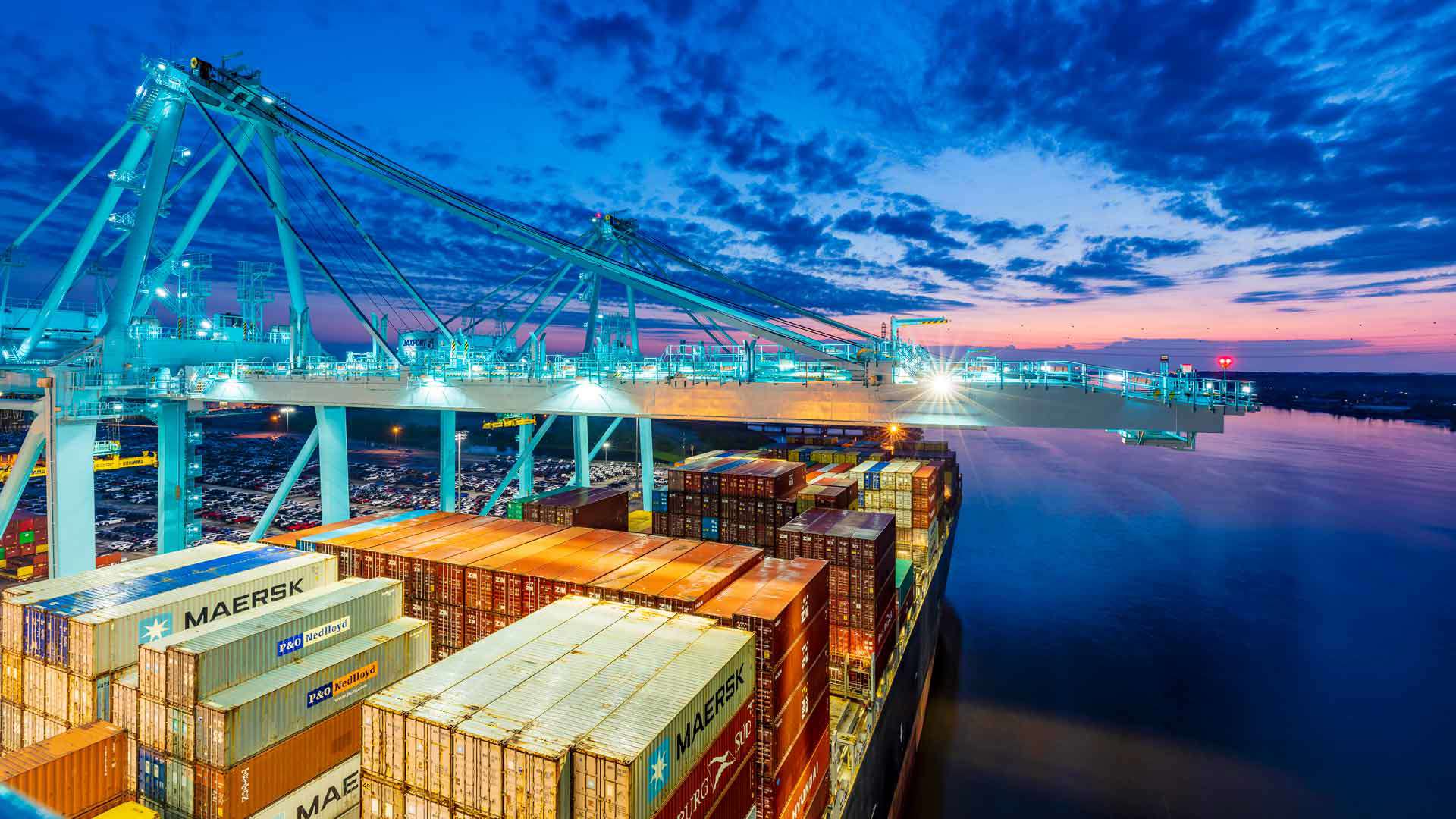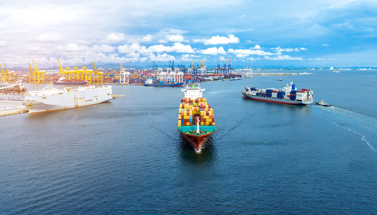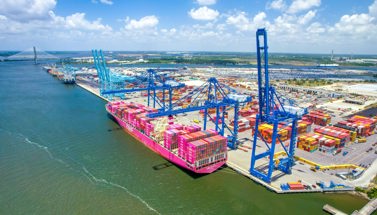
7 Busiest Ports in South America
Each of the twelve South American countries depends heavily on global trade to develop and sustain their economies. In fact, trade volume in this region has increased 50% more than the global GDP since the turn of the century.
And if you are looking to conduct business in South America, or with partners on this continent, you will undoubtedly deal through one of its 453 ports. As technology advances and globalization increases, seaports will continue to help grow the industrialization of each nation and South America’s consumer power as a whole.
So which ports in South America are the busiest?
If you are doing trade in the region, you will likely send goods through one of these top 7 South American ports, ranked by the volume of shipping activity.
1. Itaqui, Brazil
Located in the city of Sao Luis, the port of Itaqui ships 146 million tons of cargo per year. Its facilities include a 1,616 m long wharf, six berths, three reach stackers for container handling, two ship loaders, and twenty stackers. Over the last few years, it has doubled the volume of containers and tripled the total number of tons it handles.
The port moves manganese ore, aluminum ingots and bars, copper, pig iron, coal, petroleum coke and derivatives, liquefied petroleum gas, limestone, alcohol, vegetable oil, fertilizers, wheat, rice, and soybeans. The port plans to build a new general cargo terminal to handle pulp and paper.
2. Tubarão, Brazil
Located near the town of Vitoria, the port of Tubarão is the world’s largest iron ore embarking port, moving 80 million tons of it per year. It is crucial for exporting Brazilian iron ore extracted from the nearby mines in Minas Gerais.
In 1969, the port installed pelletization equipment and became the Tubarão complex. The port now has five tipper cars with a capacity of 7,000 tons per hour and six terminals that accommodate 120 million tons of cargo per year. The terminal shipyards can handle four million tons of ore and pellets.
In addition to iron, the port moves bulk coal ore, steel products, grain, soybeans, fertilizer, and bulk liquids.
3. Santos, Brazil
Located in the city of Santos and 70 miles from Brazil’s most populous city, Sao Paulo, the port of Santos has the largest logistics capacity in Latin America and is considered to be Brazil’s most modern port. In 2018, it processed 133 million tons of cargo, generating $250 million in revenue. From 2006 until recently, it was the busiest port in Brazil.
Since 2011, imports have arrived from 185 developing countries and 35 developed countries. The port’s terminals handle solid and liquid cargo in containers and general cargo transport. Coffee was the main export until World War II and continues to be significant. Today, the port’s most important cargo is fertilizers, but it also moves oil from Brazil, sugar, wheat, soybeans, oranges, juices, alcohol, cotton, cars, machinery, and paper.
4. Callao, Peru
Located in the Lima-Callao metropolitan area, the port of Callao handles 43 million tons of cargo per year. As Peru’s biggest and most important port, it is a vital component of the country’s commercial network and a major distribution center for imports and exports. The Port of Callao handles about 20% of Peru’s ocean-borne cargo.
The port has eight docks and 18 docking facilities that serve container ships, bulk carriers, roll-on/roll-off vessels, oil tankers, general cargo ships, and passenger ships. The port has 14 reach stackers, six mobilizers, and three cranes.
Five pipelines at its Jetty No. 7 are dedicated to fuel shipment and discharge. Separate pipelines are dedicated to “white products” (gasoline, kerosene, solvents, and turbo); diesel kerosene and solvents; liquefied petroleum gas, propane, and butane; chemical products, methane, and methanol; and “black products” (petroleum and asphalt).
The port is also home to Cruise Portao, Lima’s main cruise terminal that hosts major cruise lines like Royal Caribbean and Princess Cruises, as well as local cruise ships.
5. Cartagena, Colombia
Located in the city of Cartagena on the Carribean Sea and 265 nautical miles from the Panama Canal, the port of Cartagena ships 33 million tons of cargo volume every year. One of its sea terminals, Sociedad Portuaria Regional de Cartagena, has been named “Best Caribbean Port” 7 times between 2005 and 2015 and was called “most reliable port” in 2013 by the Caribbean Shipping Association for its high levels of productivity and efficiency.
The port can accommodate the biggest ships in the world. With two longitudinal piers at its terminals, Cartagena can receive five Super Post Panamax ships simultaneously. It is Colombia’s main oil port and also handles coffee, platinum, fertilizers, textiles, cosmetics, and leather goods. Additionally, the port serves 500,000 tourists in a normal year as a cruise ship terminal.
In 1984, UNESCO declared the port of Cartagena, along with its fortress and other monuments, a World Heritage Site.
6. San Lorenzo-San Martin, Argentina
Shared by the cities of San Lorenzo and Puerto General San Martin, the port of San Lorenzo-San Martin is a series of facilities that transports up to 32 million tons of cargo per year. It can handle ships up to Panamax size and is the last deepwater port on the Paraná river, kept at 34 feet deep by dredging.
The port is a major distribution center for 60% of Argentina’s agricultural exports, moving 50% of its soybeans and 36% of its corn, wheat, and sorghum. It also ships vegetable oil, refined petroleum products, liquefied petroleum gas, and chemicals.
7. Paranaguá, Brazil
Located in Paranaguá, this port and its sister port, Antonina, ship 28 million tons of cargo every year.
The port of Paranaguá has storage capacity for over 1.2 million tons of bulk cargo, 24 warehouses, and 78 storage tanks for liquid cargo. It can process 25 containers per hour and can store 60 thousand tons of sugar and seven thousand tons of refrigerated cargo. The port facilities have 21 silos with the capacity to hold 760 thousand tons of soy and grain, which can serve three Panamax vessels simultaneously.
The port is the most important exporter of Brazilian agricultural products, notably soybeans, soybean meal and pellets, and maize. It is the biggest exporter of soybeans in Latin America and Brazil’s largest port for grain shipment.
Connecting to South American Markets with Ocean Shipping
According to the U.S. Small Business Administration, 96% of the world’s consumers live outside of America. The Mercosur region, in particular—comprised of Brazil, Argentina, Uruguay, and Paraguay—boasts a GDP of over $3 trillion and a population of 260 million people. As the fourth-largest trade bloc on the planet, it is rich in opportunity for expanding business interests.
Doing business in South America could enable you to diversify assets, expand your talent pool, and gain access to new and emerging markets. Ocean shipping is a reliable, affordable way to get your product to these markets. Look to an experienced, proven freight forwarder or NVOCC to make it happen.




